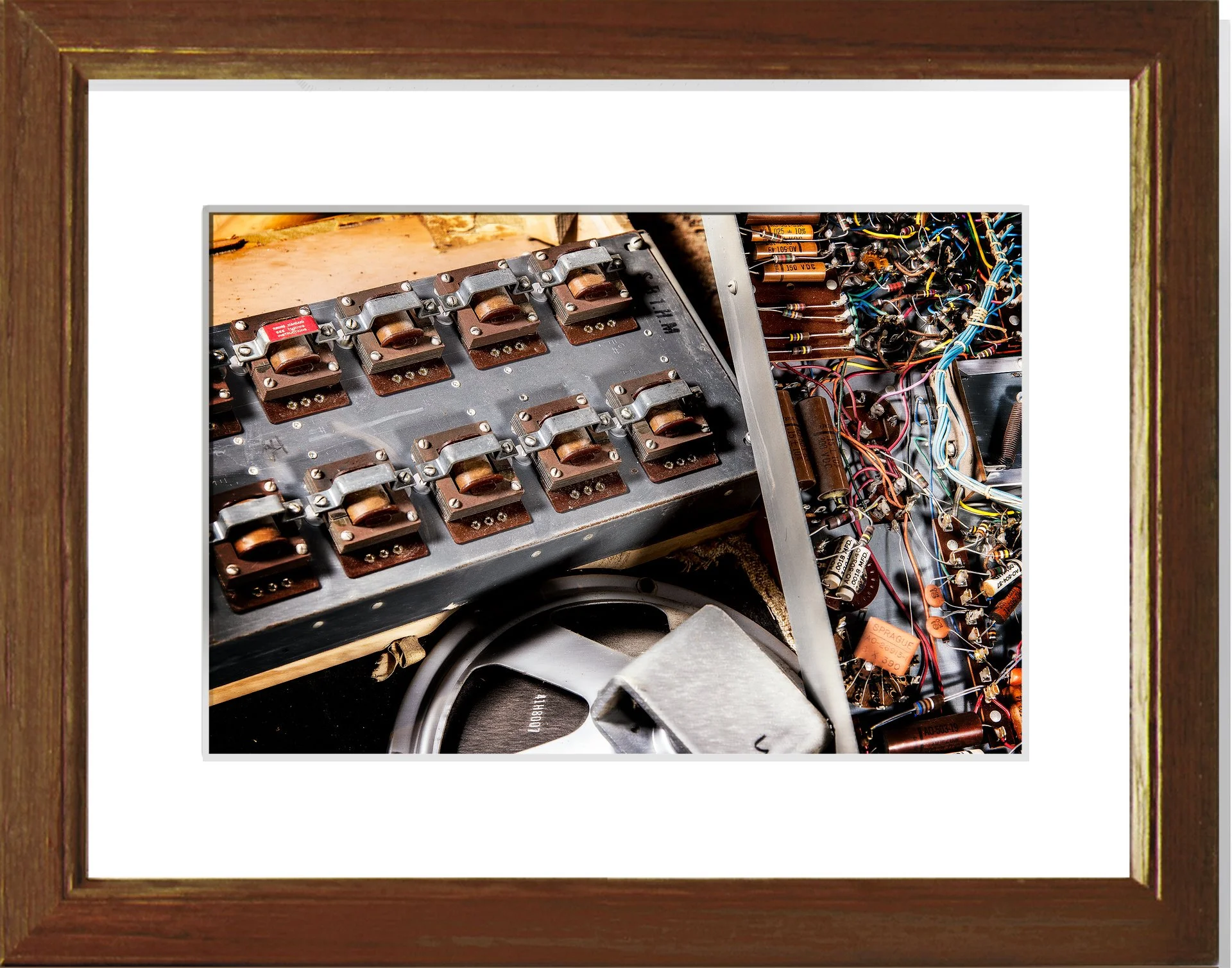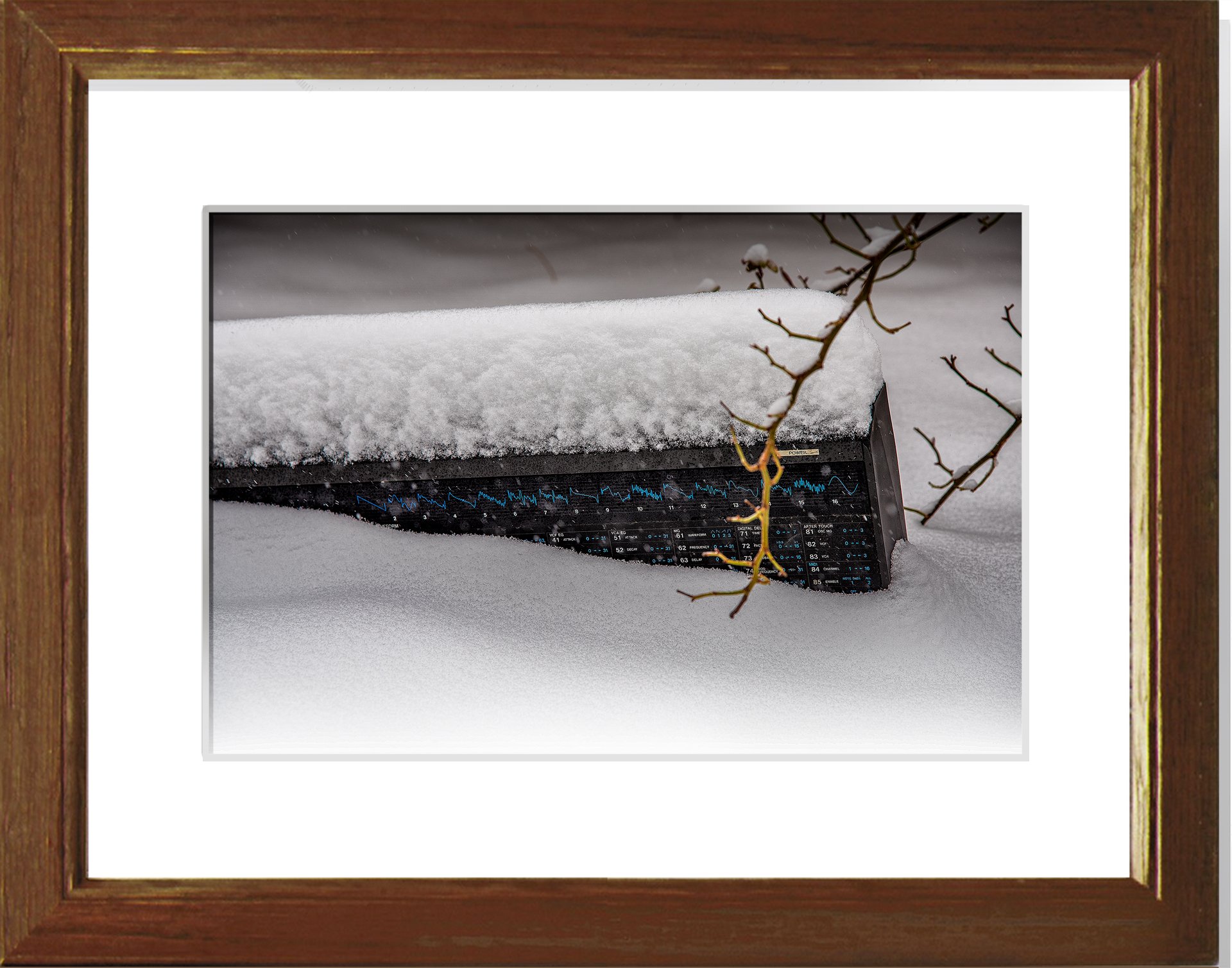The Discarded
Craig Patterson, over a fifty-year career in the music industry, has owned approximately 150 keyboards, including the heavyweights of all time, as well as forgotten keyboards no one else wanted.
“During my tenure as a musician traveling on the road,” begins Craig’s intro to this work, “it was always shocking to me how other musicians could simply throw an instrument away if they thought something was around that could do a job better.” While some of these instruments can bring some money in the used market, the ones featured here are generally too big and heavy for that to be a possibility.
Rather than treasure these workhorses for what they can accomplish, they are instead discarded in favor of whatever is lighter, faster, cheaper, or more capable. And this attitude isn’t just among musicians; it’s a part of the very fabric of our modern experience. We eschew land lines because a cell phone is more convenient, despite the fact that a land line won’t go out when there’s a power outage, and the call quality is far superior to any cell connection. We would rather have instant access to every song ever recorded, than collect just the ones that are important to us, even though the new way is of poorer sound quality, and pays the artist less, if anything at all. The new way is easier and cheaper, so the quality is not even an afterthought.
The instruments below still had decades of life left in them, but they were worth literally nothing. Hit records, classic songs, and countless family get-togethers were under their belt, but with no one to use them currently, no one who knows how to fix them, and no place to store them, they can only languish, like an eighty-year old grandfather who helped win the war, but whom no one cares to hear.
This exhibit is meant to put on display the fact that we have discarded these road and home warriors. In life, someone hauled them away, and their now-former owners didn’t care what happened to them. But now we know: They are being destroyed as worthless and pointless, making way for the cheap and the digital.
Hammond S6
Built in 1958, this was a smaller entry in the lineup of the world’s most famous organ manufacturer. It was completely tube-based, with no tonewheels, and was the first organ to use accordion-style buttons. George Harrison wrote the Beatles song “Blue Jay Way” on an S6.
Korg DW8000
In the early days of digital audio technology (1985), the DW8000 stored digital waveforms for playback. The waveforms were vastly more complex than the simple tones generated by analog synths, but many of them sounded strangely similar in this system. The waveforms were put through more traditional analog-style filtering and amplification, trying to bring a more familiar feel to the user than did the Yamaha DX-7, the most famous of digital synths. Depeche Mode, Dream Theater, and Joe Zawinul have all used this synth, but this particular example has found its final rerting place half-buried in a field in Colorado, trying to find an analogue warmth in the natural world.
Lowrey TBO-1
A full-sized organ that takes several people to move, the TBO-1 was used to record The Who’s Baba O’Riley AND Won’t Get Fooled Again. But full-sized organs, no matter the make, are a tough sell these days. Some organs that sold for twenty to thirty thousand dollars (USD) are now being given away, often with no takers. One really needs to be a dedicated collector with a fair amount of empty space in order to enjoy a piece like this. With only those two credits to its professional name, there were still thousands of these sold to households worldwide. After the family gatherings and keyboard lessons were over, it seemed there was no more inspiration to be wrung out of these pieces. At least, not so much that their owners thought they were actually worth keeping.
Upright Piano
Every Craigslist in the country has free pianos listed every single day. Some are taken, but most will end up in a dumpster, like this one did. Grand pianos sometimes fare better, but not always. Thousands of hours have gone into every single piano ever built, far more than any digital keyboard, but even professional performers will typically drop the piano requirement in their rider, favoring instead the predictability and reliability of a digital keyboard, playing back recordings of each individual piano tone. There was a time when virtually every household had a piano. Now most household will have a cheap digital version with poor action and terribly recorded sounds. But the lightness, cost, and easy disposability take precedence.
Roland MP-600
A perfect example of technology that tries to bridge a divide. An electronic keyboard that tries to sound like a piano, without using samples. The result is quite unconvincing, but does have its own sound as a result, a status achieved quite unintentionally. Though small compared to an upright piano, and portable in its own rudimentary case, it’s pretty heavy at eighty pounds, making it sit in an uncomfortable place: not sounding like a piano, but still hard to move around. The action is heavy and indistinct, and is at its best when taken apart.
Electro-Voice S-18 3
Back in the days of actual touring bands, this giant cabinet was popular with keyboard players for its magnificent sound and big volume. It was capable of powering entire clubs, but was most at home on a large stage as a dedicated keyboard monitor. Sporting an 18 inch woofer and E-V’s famous Vented Midrange (VMR) driver, it was versatile, and unfortunately, very heavy. Its size prevented any musician from gigging locally with it, as it wouldn’t fit in a car, unless one was willing to forgo the rest of their keyboards. As bands tried to make their rigs ever smaller, it fell out of favor, and now can’t even be used by churches or schools.
Leslie 21H
The Leslie rotating speaker is ubiquitous in pop, blues, and jazz music. Virtually every time you hear an organ of any kind, and even guitar sometimes, it’s going through a Leslie speaker. Unfortunately, though the many different types of Leslies operate in exactly the same way and use many of the same parts, some are more desirable than others. The one from my collection, the 21H, is one of the units that commands so low a price that not only is it not worth shipping, it often cannot be given away.
So where are the pictures of its destruction? Well, in an act of completely unintentional irony, all the images of its demise and final rest were on a memory card that got reformatted in preparation for another project, lending even more credence to the notion that it must not be worth anything, even accidentally. So enjoy the blank space below as a final commentary on the fleeting value of iconic objects.




































